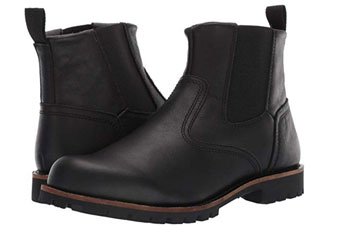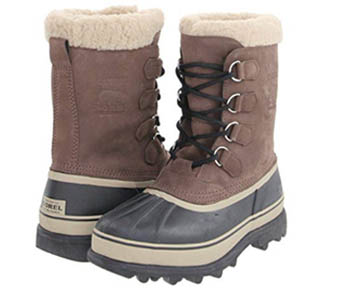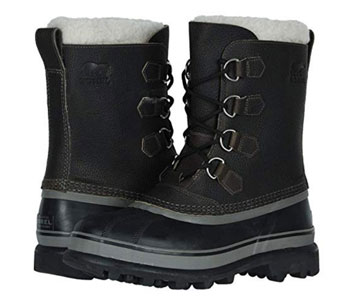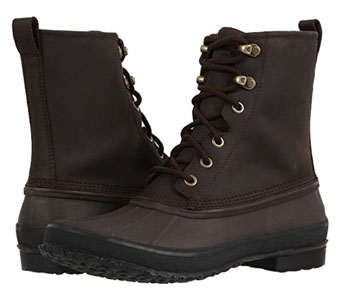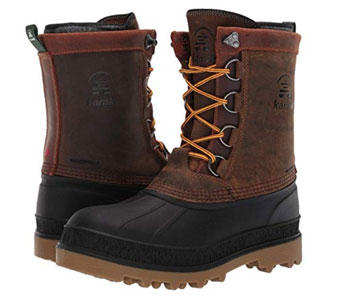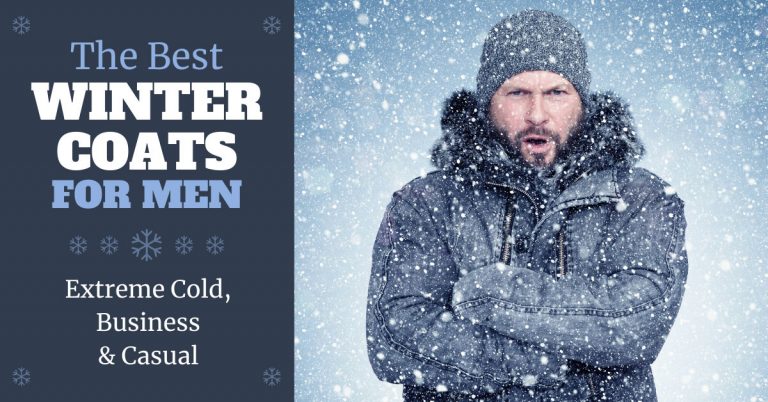How to Dress Sharp for Winter: The Ultimate Men’s Guide for 2023
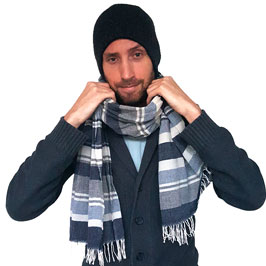
How should a man dress for winter to look sharp?
Each year, you can spot the abominable snowmen walking the streets. Buried deep in their bulky coats, their frumpy scarves and their gigantic gloves. They’ll do anything to keep themselves warm, even if they have to bundle up like an 8-year old.
But you can keep warm and dress well at the same time, retaining your sense of class
This article explores how you can dress for winter to look sharp and keep warm. We’ll explain how to layer your outfits and which fabrics to look for. And finally, we’ll tell you which accessories you need and which stylish coats and winter shoes to choose from.
Note: This article may contain affiliate links. That means if you click a link and purchase something, I earn a small commission, at no additional cost to you. All opinions are my own.
How to Dress for Winter to Look Sharp and Stay Toasty
When you dress for winter, you want to ensure that you’re both comfortable and warm. When you’re uncomfortable and shivering from the cold, you’ll look awkward no matter what you’re wearing. You should never sacrifice comfort and warmth just to look your best.
But you don’t have to sacrifice style for comfort either. You just have to adapt your outfits to the colder weather.
When you want to dress sharp for winter, you should:
- Layer your clothes
- Choose winter-appropriate fabrics
- Wear some key winter accessories
- Wear the right men’s winter coat
- Wear the right footwear
And isn’t this your lucky day; these will all be explained in this article.
Let’s start at the top…
Winter Layering: The Key to Looking Sharp While Staying Warm
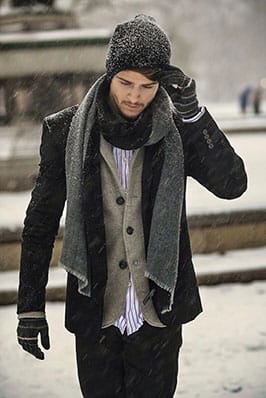
I’m personally not the biggest fan of winter.
I hate the cold and always feel like snow just gets in the way. But one thing I love about winter is that you have a lot more options for mixing and matching clothes.
In summer, wearing too many items on top of each other just gets you overheated. But in winter, you can go all out. With four different layers of clothes, you have a lot more room to be creative.
You have a lot more outfit choices. That shirt you wore on its own in summer can now be worn in many different ways.
And the best thing? Wearing multiple light layers not only makes you look sharp, but actually keeps you warmer than just wearing thick clothes. And if you do get too hot, you can just remove a layer to stay comfortable.
So let’s cover some layering basics…
For those that don’t know, layering is the simple act of wearing more than one item on top of one another. Wearing a shirt over a tee is layering. Wearing a sweater over a shirt is layering. Wearing a jacket over a sweater is layering.
So let’s assume a basic winter outfit will consist of at least three layers. We can divide them into three categories:
- Base layers (e.g. undershirts, T-shirts, shirts)
- Middle layers (e.g. shirts, sweaters, cardigans, vests, denim jacket)
- Top layers (e.g. jackets, coats)
Note: Whether something functions as a base, middle or top layer depends entirely on the outfit, but let’s keep it simple.
The general rule to keep in mind when layering is that you work from thin on the inside to thick on the outside. That means you want the lightest fabrics closest to your body and get heavier with each layer.
Another rule is that you should never wear so many layers that you restrict movement. You should wear enough layers to keep you warm while keeping your full range of motion, especially in the arms. You need to find a balance.
And naturally, your outfit should look put-together. You can’t just grab random clothes out of your wardrobe and layer them on top of each other. You need to coordinate them. So before you get dressed, lay out your layers on your bed to ensure that all the clothes match.

Lastly, never assume the layers closest to your body will never be seen. You want to be able to remove each layer and still look sharp. If you wouldn’t wear it on its own, don’t wear it in a layered outfit either.
Like I said, you might remove some layers as the day goes on. You never know when the day has an upswing in temperature, or when you walk into a building that has the heat blaring at tropical temperatures.
So don’t wear that billowy shirt, thinking your sweater will cover it up, because you might just take that sweater off at some point. And besides, you can’t hide an ill-fitting item under another layer anyway. It will bunch, which will show through the layers on top of it.
Anyway, let’s go over some examples for formal wear and casual wear.
1. Layering for Formal Outfits
So let’s say you’re dressing for the office in winter; what do you wear?
Well, you can start with a basic white t-shirt or undershirt as your base layer. Then, you can wear a dress shirt on top of that as a second base layer.
Then, you can wear a sweater, cardigan or vest. Whatever you choose, it should fit snugly over your other layers and tie, but should not look like it’s cutting off your circulation. If you go for a sweater or cardigan, make sure it’s light-weight, rather than a bulky knit.
Then at last, you can wear a jacket, and a coat for when you go outside.
So to sum up a basic formal winter outfit from bottom layer to top:
- T-shirt or undershirt (base layer)
- Dress shirt (base layer)
- Sweater, cardigan or vest (middle layer)
- Suit jacket (top layer)
- Coat (top layer)
Now depending on your climate, you may not need to wear all these layers all the time. You need to adapt to your own circumstances. So if you find yourself breaking out in sweat despite the cold temperature, you’re probably wearing a layer or two too many.

Besides the clothes you wear on your torso, you can layer your legwear as well. Again, this can be unnecessary, but if you’re facing cold winds and you find that it breezes through your pants, try a pair of long johns instead of (or in addition to) your usual boxers or briefs.
2. Layering for Casual Outfits
For a casual outfit, you can stay close to the previously mentioned outfit, but because you’re not as restricted to a dress-code, you have a lot more leeway to put your own spin on your outfit.
For example, you could layer a T-shirt, shirt and sweater.
Or you could layer a shirt, denim jacket and blazer.
Heck, you could even layer a thick-knit cardigan over a blazer or light-weight wool sweater.
Honestly, you have so many option when it comes to casual layering, these three examples are just the tip of the wintery iceberg. Just keep the rules in mind and experiment on your own.
As always though, I recommend you just keep it simple, especially when you’re a beginner. You don’t have to create something flashy to look good. Don’t overthink it.
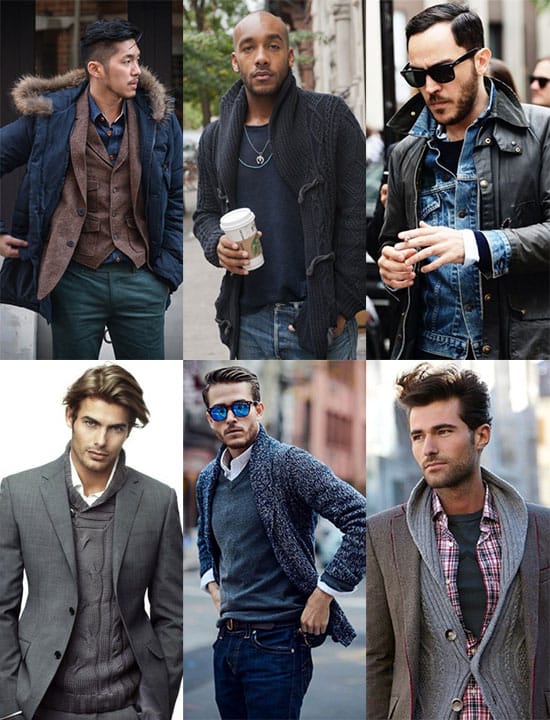
Note: If you’re living far up north, you might also want to wear some additional long-johns and/or thermal underwear. In fact, when you’re facing extreme colds, you might want to check out this infographic by friend of the site, Antonio Centeno.
The 4 Best Fabrics to Keep You Warm in Winter
Selecting clothes from the right fabrics is another key to keeping warm in winter. So below you’ll find a quick rundown of some appropriate winter fabrics:
- Cotton: Best used for base and/or middle layers. Cotton won’t keep you as warm as other fabrics, but they’re absorbent and allow the clothes to breath, which reduces sweat. Having a few cotton layers to strip down to can also be useful if you’re trapped in a building with the heat cranked up to 80 degrees. For casual dressing, you could also go for a thick-knit sweater or cardigan and wear it as a top layer.
- Denim: Best used for middle and/or top layers and legwear. Jeans are always a good choice for a casual look, and winter is no exception to that. Denim is also a good choice for a middle layer or top layer in the form of a denim shirt of jacket. Just keep it to one denim layer max.
- Leather: Best used for top layers. Leather jackets are a classic choice and will protect you from the wind. You could also opt for a leather overcoat though. And leather could even be used as middle layer in the form of a leather vest. I just wouldn’t suggest leather pants unless you’re an actual rockstar.
- Wool: Best used for middle and/or top layers. Wool is the warmest fabric you could choose to wear. A thin layer of wool will usually keep you warmer than a thicker layer of any other garment.
The trick to creating a functional winter outfit is to have a few different layers. Wearing four or five layers of wool will likely get you too hot, and, depending on your climate, wearing only cotton might not keep you warm enough.
Like I said earlier, you have lots of options to mix and match, so you should experiment.
3 Winter Accessories To Protect You From the Cold
Wearing winter-appropriate accessories when you go out into the cold is a must to stay warm and comfy. The parts of your body that usually remain bare are the ones you’ll now want to protect against the cold.
Below you’ll find what type of accessories you should go for, as well as some basic things to watch out for.
1. Hats

Protecting your head in harsh winter weather is a must, so invest in a winter hat that is stylish and save that battered baseball cap for mowing the lawn in the spring.
For casual wear, knit caps will be your go-to option. Besides protecting your head, they keep your ears warm too. You can’t say the same of other hats.
Speaking of which, some style gurus would scoff at the suggestion of wearing a knit cap with formal wear, as a knit cap is less formal than a traditional hat. This is one of those rules you can break though. If your ears are freezing off, just go for it and cover those puppies up.
However, stay away from pom-poms, tassels and other “cute” embellishments. In some cases, these types of hats can work as a statement piece, but most of the time, they just make you look like a goofball. A regular knit-cap will convey a lot more maturity and masculinity.
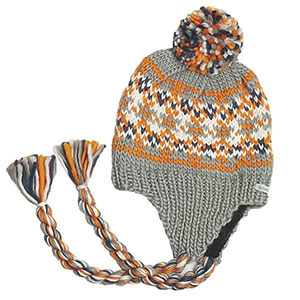
Knit caps are certainly not your only choice though. Newsboy caps or trapper hats can be a good choice for casual wear, and a fedora or homburg can look exquisite with formal wear. Like I mentioned before though, these won’t keep your ears warm.
Make sure to check the label when you buy one of these. Knit caps in lower-end stores tend to be made from acrylic. My personal experiences with this material have always been disappointing. They either make me sweat so much that my forehead starts itching or they let the cold winds pass straight through. You’ll be better off paying a bit more for a quality wool cap that actually protects your ears from the cold.
Winter Hats
2. Scarves

I love wearing scarves in winter because they not only keep my neck warm, but they present a perfect opportunity to ad a splash of visual interest to your outfit.
Most of the time when you’re outside, you’ll be wearing a coat, which will probably have a fairly muted tone. So you select a scarf that stands out against your otherwise muted outfit.
Wearing a scarf that’s brighter and more colorful than your coat will bring attention to your face (though be wary of stepping into neon-territory. You still shouldn’t go overboard).
You can also go for one with an interesting pattern, like the one pictured.
But besides colors and patterns, you have even more ways to use a scarf to add a splash of visual pop to your outfit. These days you have a great selection of thick-knit scarves and infinity scarves — you know, those scarves you loop around your head instead of tying them. The textures in these scarves can look quite masculine and cool as well.
Those types of scarves work better for casual wear than for formal attire though. For formal wear, go for a simple wool scarf that’s not to chunky.
Like knit caps, you’ll often find these made from acrylic in stores. Don’t fall for it. Check the label and make sure you have wool. Like mentioned earlier, even a thin wool can keep you warmer than most other fabrics.
Winter Scarves
3. Gloves
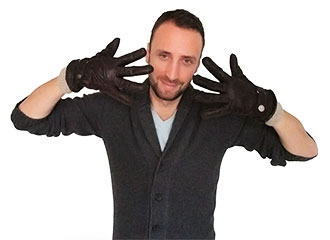
When it comes to gloves, you should abide by three rules:
1. They should withstand the cold
2. They shouldn’t soak up moisture like a sponge
3. They shouldn’t look like the mittens your mom clipped to your coat when you were six
Personally, I only go for leather gloves. They both protect your hands from wetness, wind and they look classy as hell. When you select leather gloves, go for a pair with lining to keep your hands extra warm.
You want to match your leather to your other leathers. So no brown gloves when you’re wearing black belt and shoes, or vice versa. The leather doesn’t have to match exactly — that usually looks too try-hard — but the closer they are, the better.
For formal wear, stick with leather and keep them sleek. But for casual looks, leather is not your only option; you could also go for wool gloves in funky colors. Just don’t break out the chunky ski-gloves unless you’re facing extreme cold.
Winter Gloves
Choosing a Stylish Winter Coat
Choosing the right winter coat is essential to your look. It’ll be the first thing people see any time they meet you outside, so you want it to give the right impression.
And many men just drop the ball in this area and just go for some crappy-looking windbreaker.
Yes, your coat should protect you from the wintery elements, but come on… Make an effort, guys. You have plenty of choice when it comes to winter coats.
Which coat is best for you depends on your needs and climate though. Some of you will only need a casual coat, while others will also need one to wear with their formal wear.
Rather than choose a coat that happens to be on trend today, go for a classic one that you can wear for years to come. The classics never go out of style, guys. Remember?
And be sure to get one in a neutral color. Grey, navy, or khaki are your best options here. You want your winter coat versatile, so it doesn’t matter what you wear it with.
So let’s go over some of my personal favorites…
1. The Pea Coat
My personal favorite is the pea coat. It looks great, emphasizing the male form with its broad shoulders and slimmed waist, but it also does a good job of keeping you warm. The pea coat has a broad collar that you can actually pop without looking like a jackass (unlike shirt or polo collars!) Between that and the double-breasted front, you’ll have ample protection from the wind.
As a note though, they don’t always wear well in combination with structured blazers or suit jackets, as the pea coat itself is quite structured as well.
2. The Overcoat
The classic overcoat is best for business and business casual men. It keeps you warm while giving you an air of professionalism. This is a must-have for anyone who wants to enter their office looking respectable.
3. The Trench Coat
Trench coats are quite versatile and a must for when the rain comes pouring down (though, they also look fine when it doesn’t). You can wear them over your casual and formal clothes, and look sharp. Trench coats come in many styles too, so you have a lot of options there. Hint: Finding one with a wool lining is a good idea!
4. The Parka
Parkas are casual coats with fur-lined hoods that will protect you from the cold winds and falling rain or snow. Though they’re traditionally casual, feel free to wear one with a suit as well (just check out this video). It’s an excellent coat especially when you live in colder climates. They were traditionally worn by eskimo’s, so that should tell you something.
5. The Duffle Coat
Another stylish casual coat made from a coarse wool to keep you warm, and easily recognized by the trademark wooden toggles instead of buttons. They also often come with a hood to protect your head.
These are certainly not your only winter coat options, but I can highly recommend them. At the very least, they should give you an idea for what you can go for.
Choosing Your Winter Shoes
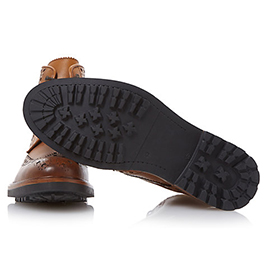
Your regular shoes, especially dress shoes, won’t keep you upright when the ground beneath your feet is frozen solid. They probably won’t do much to keep your toes nice and warm either.
You need to slip into some winter-appropriate footwear.
But worry not. That doesn’t mean you need to stomp around in clunky, outdated boots. These days, you have a lot of options.
You can even choose a pair of boots that could easily be mistaken for a type of dress shoes.
A few key aspects to look out for when choosing your winter footwear are:
- Interior lining; this will keep your toes from freezing.
- Waterproofiness; this will keep the melted snow from seeping in.
- Soles with traction; this will keep you from slipping on your ass.
So when you’re in the store, check the inside of the boot to see if it’s lined with a fuzzy wool.
Second, check the label to see if it’s waterproof. (If the label doesn’t say, you can always waterproof your boots yourself.) Also check whether the boot has stitching where the leather meets the sole on the outside. This is known as the goodyear welt, and is the most waterproof way to attach a sole to your shoe.
Third, check the boot’s sole. Having a sole with traction is imperative, especially when you live in a colder climate. Feel it. Is it smooth, or does it feel like it would offer resistance while traversing a slippery street?
Okay, got it?
Then let’s check out some good boot options…
Brogue Boots
Brogue boots look just like regular brogues, but have a few extra inches of coverage over the ankles to help keep your feet dry. Your pants will cover this raised part of your boot though, so you’ll still look professional. No one will be the wiser.
They also often come with insulation and vibram soles to keep you from slipping, so they check all three boxes. And frankly, you’ll look great wearing them with casual outfits too. Can you tell I kinda love these?
Leather Chukka Boots
When you think of chukka boots, you may think of the beige or tan suede versions that are so prevalent during springtime. Well, you can simply upgrade this look for winter by getting a pair made from leather.
Not only do they look great, they’re comfy as hell.
Work Boots
Every man needs a pair or sturdy work-style boots for winter. Whether you plan to actually use them for manual labor or you just need something dependable for weekend wear, work boots will ensure that your feet stay dry when the sidewalks are wet. They’re an excellent choice for a more rugged casual look.
Chelsea Boots
Chelsea boots look great both with a suit or a casual leather jacket and jeans. Their defining features are the heel pull and elastic ankle-sides that make them easy to slip on.
Chelsea boots offer a sleek look due to the lack of laces and minimal details, which is part of why they’re so damn versatile. They’re classics for a reason.
Duck Boots
These won’t be for everyone, but when you’re dealing with heavy snow, sleet or heavy rainfall they can be perfect. They combine rubber with leather to create the perfect rain boot. They’re not the most elegant, but they have an interesting shape and are a good choice when you’re hiking, shoveling snow, or doing other labor outside.
This is another boot that can be quite hit or miss though. Err on the side of subtle.
Survive the Winter Months Looking Sharp and Staying Warm
You no longer have to adopt the abominable-snowman look this winter.
You no longer have to bundle up like an 8-year old dressed by his overly protective mom.
Now you know how to battle the frosty temperatures, the piercing winds and the bombardments of snow. And you know how to do so without sacrificing your personal presentation.
You know how to survive winter and still present yourself as the respectable man that you are.
With the right layering, the right coat and the right footwear, you’ll be battle-ready, even when the kids down the block just picked you for an impromptu snowball fight.
So go on… Put your stylish armor together.
And kick winter’s ass.
Did You Find That Useful? Then Check This Out…
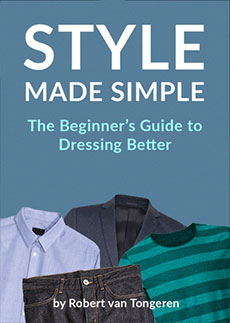
I wrote a men’s style guide that simplifies the art of dressing well, focuses on what matters, and takes you through it one step at a time. Enter your e-mail below and you’ll receive three free chapters, which will show you:
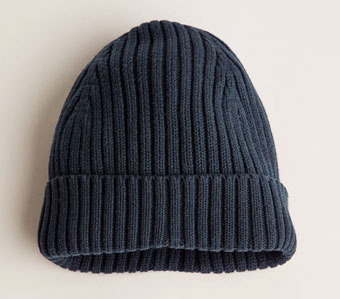

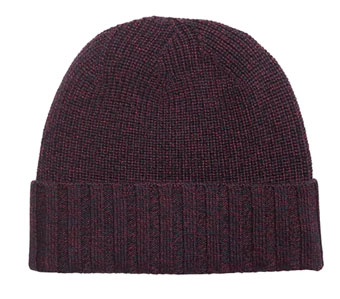
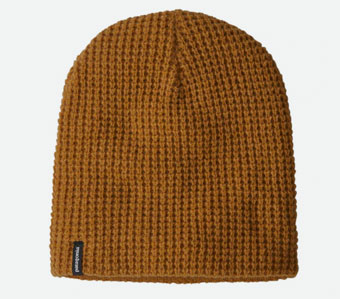
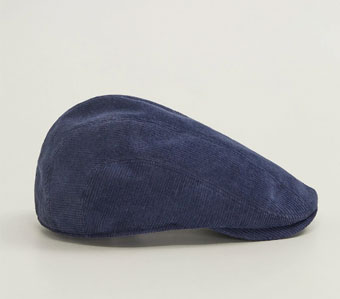
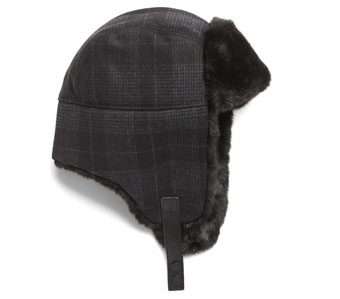
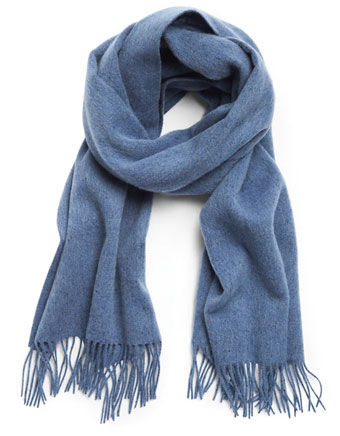
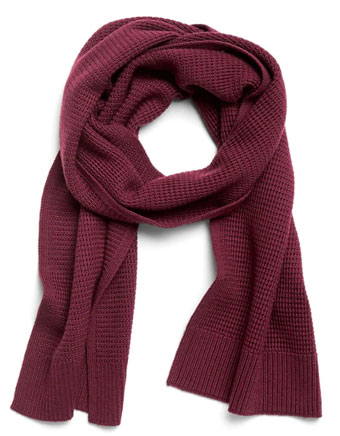
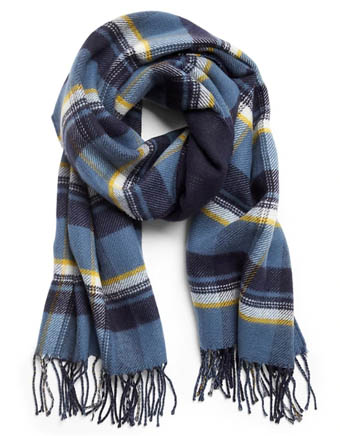
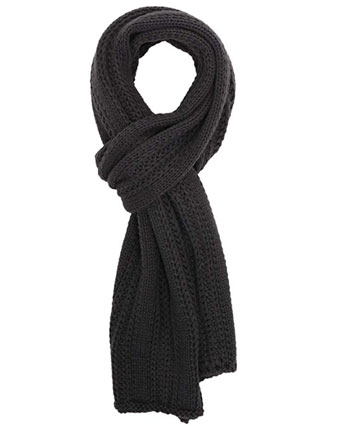
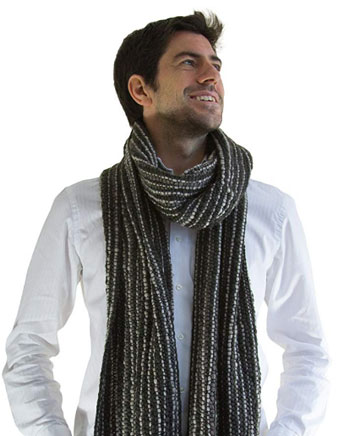
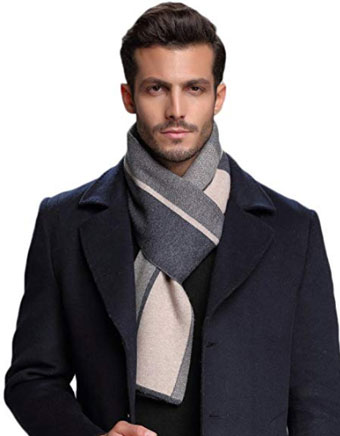
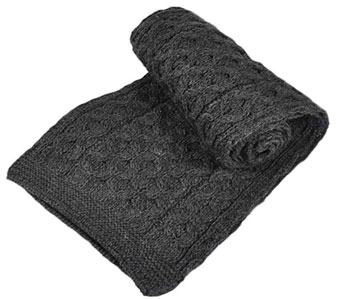
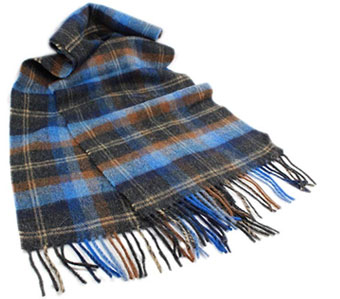
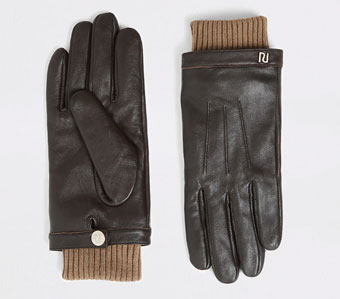
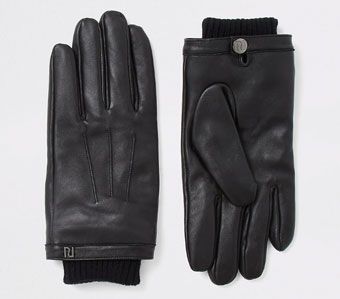
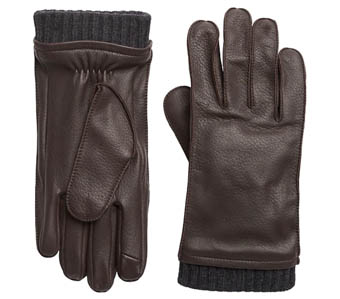
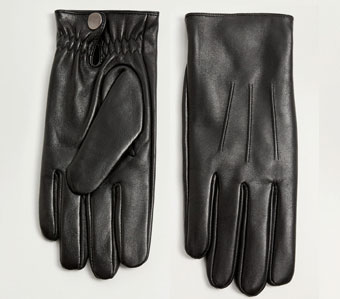

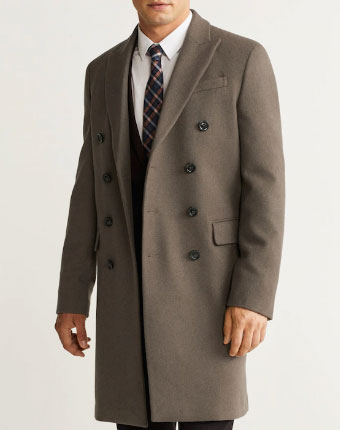
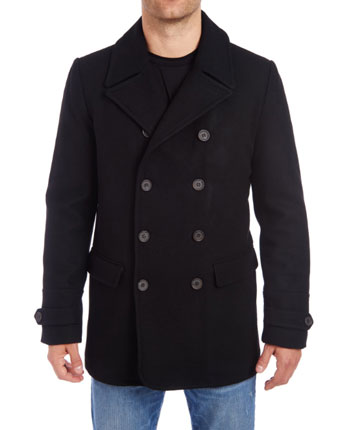
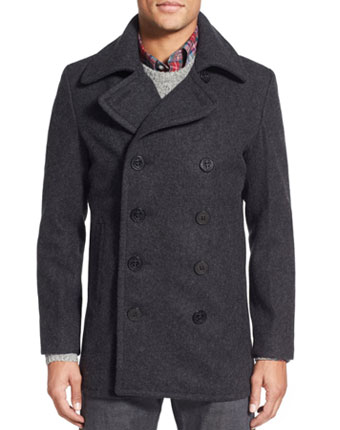
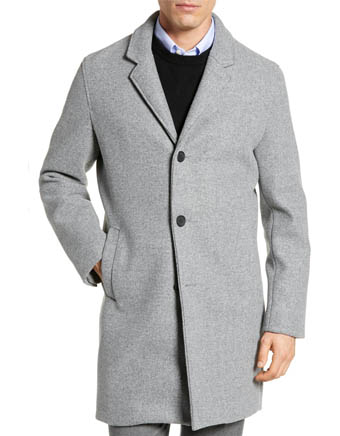
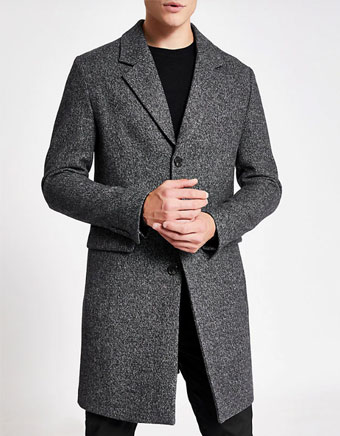
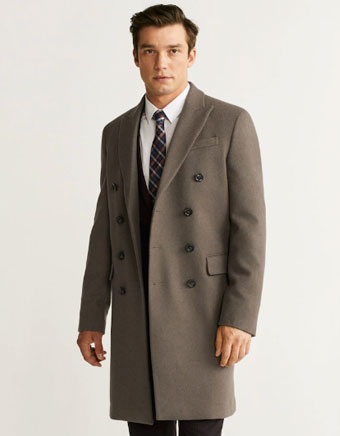
 Mango
Mango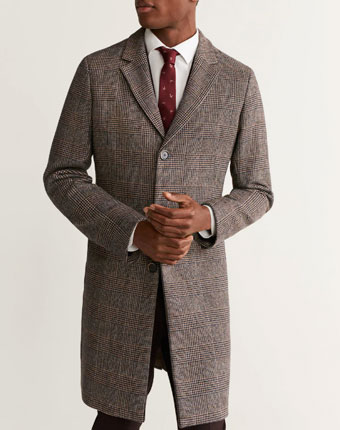
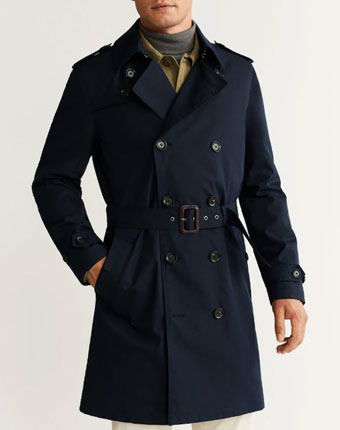
 ASOS
ASOS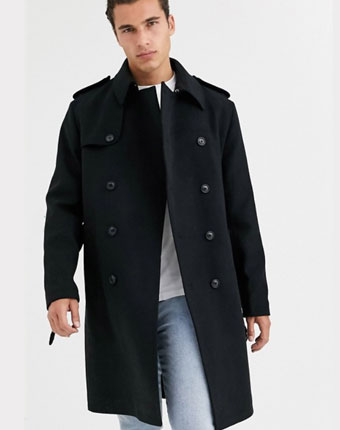 ASOS
ASOS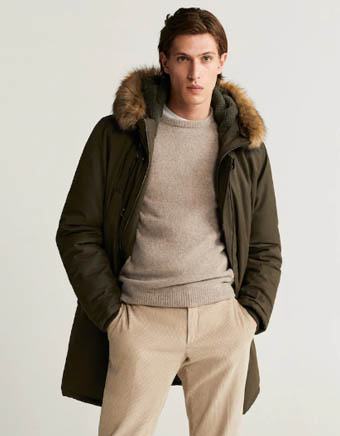 Mango
Mango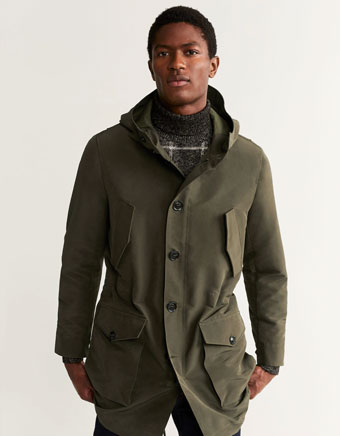 Mango
Mango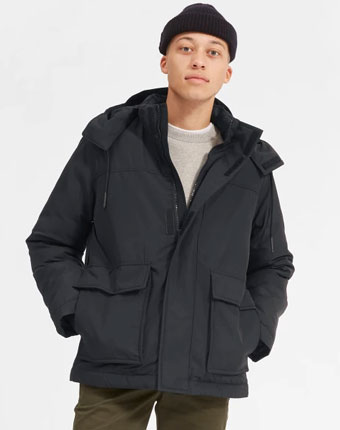
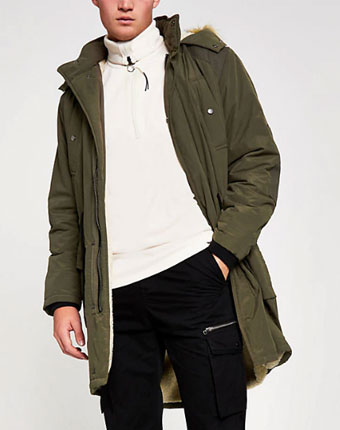 River Island
River Island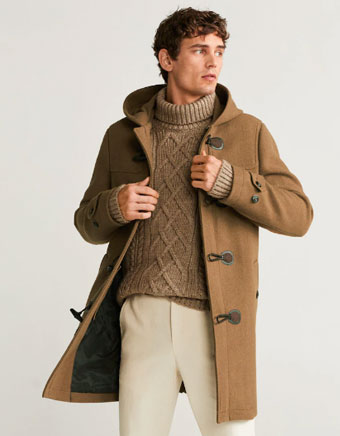 Mango
Mango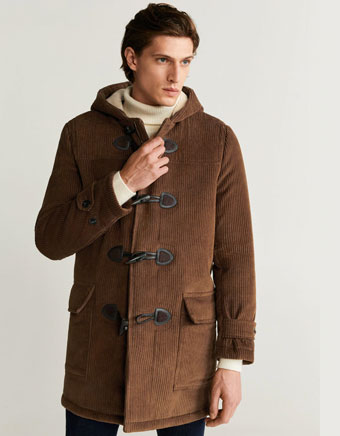 Mango
Mango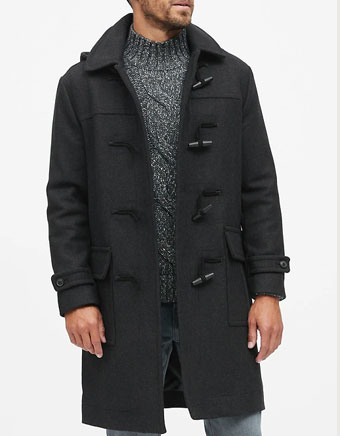
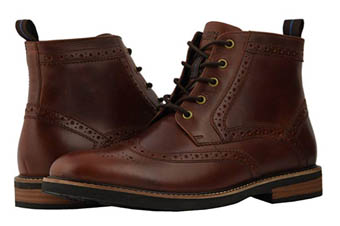
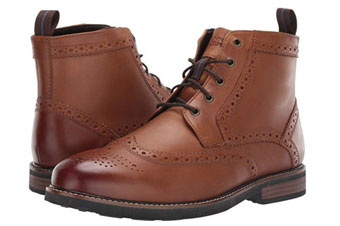

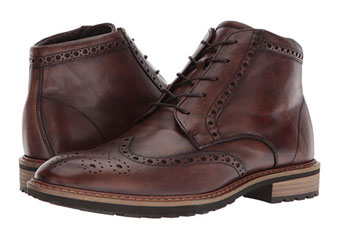
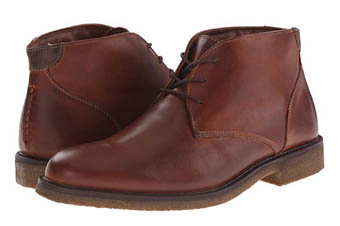
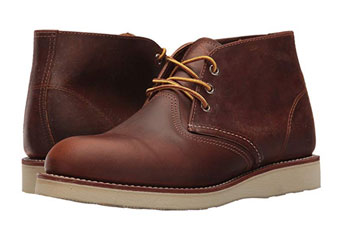
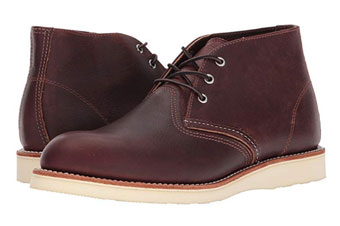
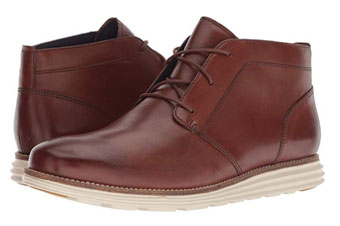
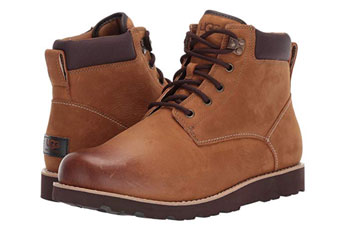
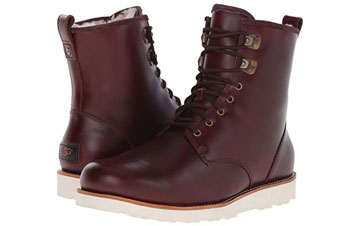
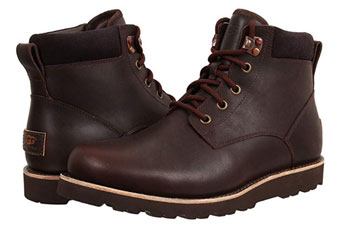

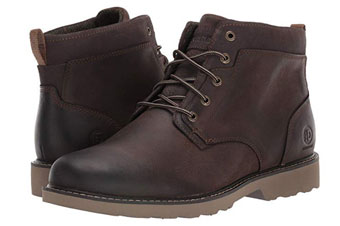
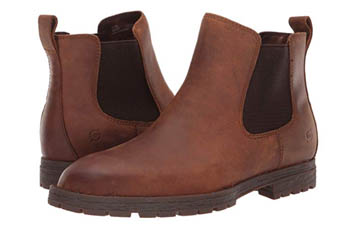
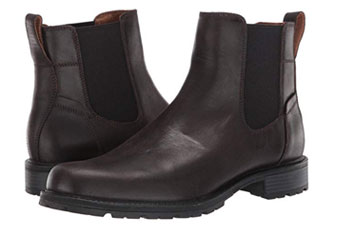 Merrell
Merrell